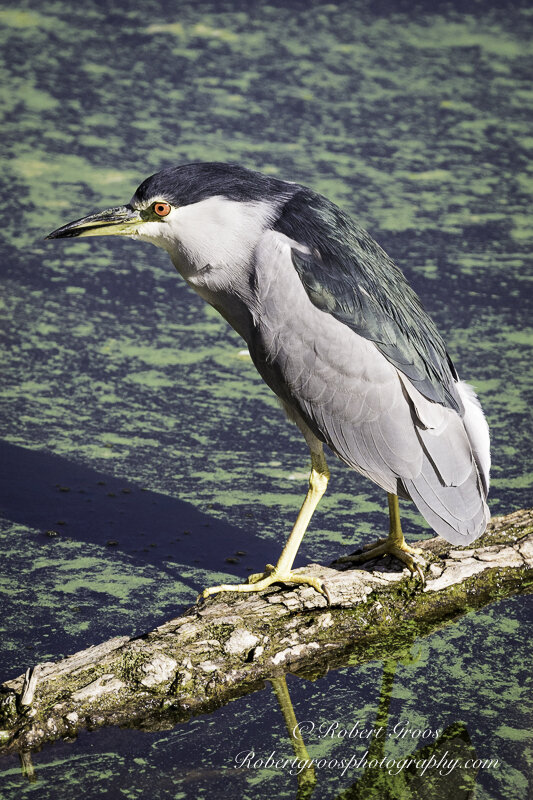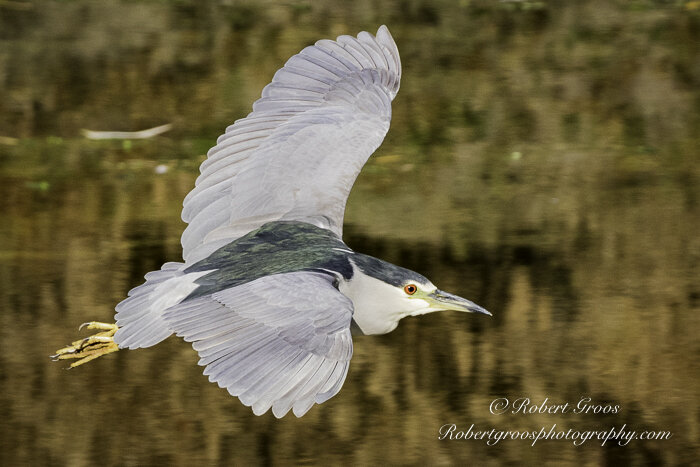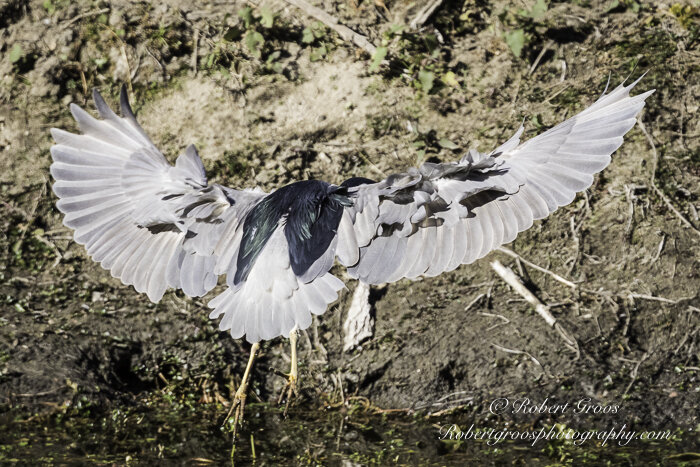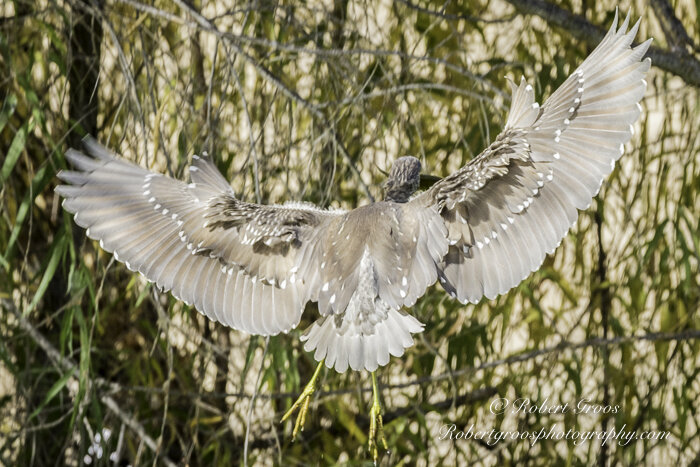Will the real Black-crowned Night Heron please stand up?
Which of the two birds above is a Black-crowned Night Heron?
Can you pick it out?
If you chose the bird on the left, you are correct. If you chose the bird on the right, you are also correct. How can that be?
The bird on the left is a juvenile. The bird on the right is an adult. As is often the case with birds, the young show little resemblance to the adult of the species.
Adult night heron with breeding plumage.
Standing or flying, Black-crowned Night Herons keep their head tucked in, which gives them a hunchback appearance. The grey-brown plumage of juveniles, with blurry splotches and streaks, is great camouflage for a vulnerable youngster hiding in the trees. During breeding season (right now), you can identify an adult male by the thin, white plumes that stream from its head, a temporary adornment that, hopefully, will attract a female mate.
Now that you can identify a Black-crowned Night Heron, the following question arises: do you have the patience of a heron? Watching one stand at water’s edge, motionless, for what seems like an eternity…often longer than you care to stand by…can indeed be an exercise in patience.
That single-goal focus produces results. One morning, in the course of just thirty minutes, I joyfully observed one juvenile heron capture and consume three frogs.
Juvenile night heron catching a frog.
While a long, thick bill might seem ideal for stabbing, night herons actually grab their meal with an open bill, often shaking it to stun or kill. They may dip the prey back into the water to wash off aquatic debris; then, cocking their head back while opening their beak, they maneuver the prey around mid-air in order to swallow the catch whole, a process that at times takes awhile. The process is quite fascinating to watch.
Black-crowned Night Herons inhabit fresh and salt water wetlands around the world, except in Antartica and Australia. It follows, then, that they eat fish, as well as other aquatic life, including frogs, crayfish, clams, and mussels. They are equal opportunity eaters.
p.s. If you are not already on my mailing list and wish to be added for future posts, please send an email to: robertgroos1@gmail.com. Your information will not be shared, and you can unsubscribe at anytime. Thank you.















